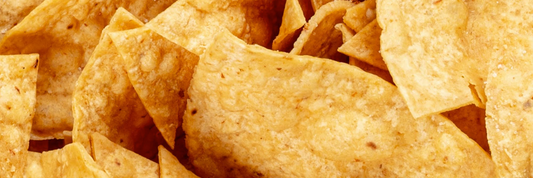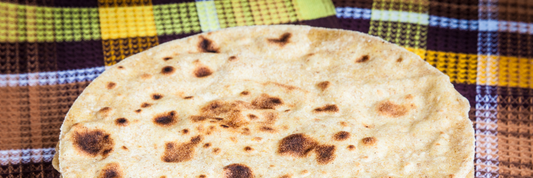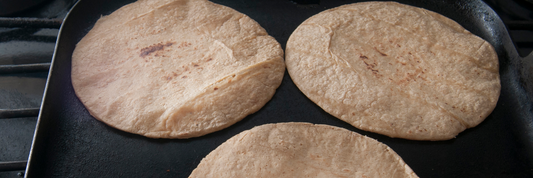Ricotta cheese is a beloved dairy product known for its creamy texture and mild, slightly sweet flavor. Originating from Italy, ricotta has become a popular ingredient worldwide, especially among those who prioritize healthy diets. Its versatility allows it to be used in both savory and sweet dishes, making it a kitchen staple.
In this comprehensive guide, we'll explore the benefits of ricotta cheese, delve into its rich vitamin and mineral profile, and give you practical tips on how to incorporate it into your meals for the best taste and nutrition.
- Ricotta vs Cottage Cheese – Which One Should You Choose?
- Ricotta Cheese Recipes – 5 Delicious Dishes You Must Try
- Types of Ricotta Cheese: A Quick Guide to Varieties and Uses
What Is Ricotta Cheese?
Origin and History
Ricotta cheese traces its roots deep into Italian history, with production dating back to the Bronze Age on the Italian peninsula. The name "ricotta" means "recooked" in Italian, reflecting its unique production process. Traditionally, ricotta is made by reheating whey the liquid left over after milk has been curdled and strained during the production of other cheeses like mozzarella or provolone. This method allowed shepherds and cheesemakers to utilize every part of the milk, ensuring little was wasted.
Historical evidence shows ricotta was likely consumed by shepherds and rural communities, though it was also enjoyed by Roman aristocrats. The techniques have changed little over centuries, with modern production still relying on heating whey to coagulate remaining proteins, producing the soft curds that become ricotta cheese.

How Ricotta is Made
Ricotta's signature creaminess comes from its unique production method. After the primary cheese curds have been removed, the leftover whey is heated and acidified. This causes the proteins left in the whey to coagulate into fine, fluffy curds that are then strained and drained. Unlike many cheeses, ricotta is not aged, which preserves its fresh, moist texture and subtle flavor.
Key Characteristics
Ricotta cheese is known for its delicate, fluffy texture light and creamy without being dense. Its color ranges from pure white to slightly off-white, depending on the milk source and production method. Flavor-wise, it has a mild, slightly sweet taste with a fresh dairy note that complements many recipes.
Common Types of Ricotta
- Fresh Ricotta: The most common form found in stores, fresh ricotta is soft, moist, and best consumed quickly for peak freshness.
- Low-Fat Ricotta: Made with reduced-fat milk, this variant offers the same texture but with fewer calories and less fat, appealing to those on lighter diets.
- Smoked Ricotta: This variation is gently smoked, imparting a rich, slightly woodsy flavor that adds complexity to dishes.
If you love eco-friendly products, whether you’re a small shop or a cheese enthusiast, KimEcopak is ready to help. Share your questions, and KimEcopak will send you the perfect eco-packaging options within 24 hours.
Benefits of Ricotta Cheese
Ricotta cheese is much more than a beloved Italian staple, it’s a nutritionally rich choice that delivers a range of health advantages, making it a valuable addition to diverse diets.
- High-Quality Protein Source
Ricotta stands out for its impressive protein content, including all nine essential amino acids. These proteins are fundamental for building and repairing muscle tissue, supporting healthy skin and hair, and sustaining energy levels throughout the day. As a result, ricotta can be a smart, satisfying choice for athletes, fitness enthusiasts, or anyone looking to boost their satiety with wholesome foods. - Rich in Calcium and Phosphorus
Calcium and phosphorus are two minerals that work hand-in-hand to maintain bone density and strength. Regular consumption of ricotta helps support proper bone formation in children and prevents bone loss in older adults. These minerals also play a key role in nerve function, muscle contraction, and dental health; just one serving of ricotta can contribute significantly towards the recommended daily intake for healthier bones and teeth. - Easier to Digest
Unlike harder or aged cheeses, ricotta generally contains less lactose. This makes it more accessible for people with mild lactose intolerance or sensitive digestive systems. Its soft, creamy texture is easy to digest, and it works well as a gentle protein source for both kids and older adults. - Healthier Cheese Option
Ricotta’s versatility shines in its lower-fat forms. Skim or part-skim varieties deliver the same mild taste and creamy consistency with significantly fewer calories and less saturated fat than many other cheeses. This makes ricotta a preferred option for those aiming to reduce fat intake while still enjoying a rich, satisfying ingredient. - Heart Health Support
Ricotta especially when made from grass-fed cow’s milk contains beneficial unsaturated fats, including omega-3 fatty acids and conjugated linoleic acid (CLA). These healthy fats are linked to improved cholesterol levels and reduced inflammation, important factors in cardiovascular health. When incorporated as part of a balanced diet, ricotta can contribute to heart wellness by providing healthy fats and supporting overall lipid balance.
Vitamin Profile of Ricotta Cheese
Ricotta cheese is a nutrient-rich dairy product that provides an array of essential vitamins critical to maintaining good health. Its vitamin content supports everything from vision to energy metabolism, making ricotta a beneficial addition to a balanced diet.
- Vitamin A
Vitamin A is a fat-soluble vitamin that plays a key role in maintaining healthy vision. It supports the function of the retina and helps in adapting eyesight to low-light conditions, reducing the risk of night blindness. Beyond eye health, vitamin A is crucial for a robust immune system; it enhances the body’s ability to fight off infections by supporting the production and function of white blood cells. Additionally, vitamin A promotes skin health by supporting the integrity and repair of skin cells. Consuming ricotta cheese, which contains a sensible amount of vitamin A, can contribute meaningfully to your daily intake, helping maintain these vital functions and overall cellular health. - Vitamin B2 (Riboflavin)
Riboflavin, also known as vitamin B2, is crucial for converting the nutrients you consume into energy your body can use. It acts as a coenzyme in various metabolic processes, aiding the breakdown of carbohydrates, proteins, and fats. This energy metabolism is essential not only for physical activity but also for maintaining brain function and supporting healthy growth and development. Riboflavin also functions as an antioxidant, helping to neutralize harmful free radicals that can contribute to aging and chronic diseases. The presence of riboflavin in ricotta cheese supports these energy and antioxidant systems, making it a valuable component in your diet. - Vitamin B12
Vitamin B12 is vital for maintaining healthy nerve cells and producing DNA and RNA, the body's genetic material. It works closely with folate to produce red blood cells, which carry oxygen throughout your body. A deficiency in B12 can lead to anemia, fatigue, nerve damage, and cognitive issues such as memory loss. Because vitamin B12 is naturally found mainly in animal-derived foods, ricotta cheese serves as an important source for vegetarians who may otherwise struggle to get enough of this nutrient. Regular consumption of ricotta can help support nervous system health, enhance energy production, and prevent anemia by providing a reliable source of this crucial vitamin. - Vitamin D
Vitamin D is essential for calcium absorption and bone metabolism. Without adequate vitamin D, the body cannot effectively absorb calcium from the diet, leading to weaker bones and a higher risk of fractures and osteoporosis. While ricotta cheese itself contains low levels of naturally occurring vitamin D, many commercial ricotta products are fortified to enhance their nutritional value. This helps support bone mineralization and overall skeletal strength. Moreover, vitamin D plays a role in modulating the immune system, reducing inflammation, and supporting heart and muscle function. Including fortified ricotta in your diet can help ensure you get this vital nutrient, especially in regions with limited sunlight exposure. - Additional Vitamins
Besides the vitamins listed above, ricotta also includes smaller amounts of other B-complex vitamins such as vitamin B6, folate, and pantothenic acid. Vitamin B6 supports brain health and mood regulation, folate is crucial during pregnancy for fetal development and helps produce red blood cells, while pantothenic acid aids in the synthesis of coenzyme A, essential for fatty acid metabolism. Together, these vitamins complement ricotta’s overall nutritional profile, further contributing to metabolic health and wellness.
Mineral Profile of Ricotta Cheese
In addition to its rich vitamin content, ricotta cheese is also a valuable source of essential minerals that contribute to several critical body functions, especially bone health, immune support, and antioxidant defense.

- Calcium
Calcium is one of the most abundant minerals in the body and is critical for building and maintaining strong bones and teeth. It plays a vital role in supporting bone density and preventing conditions like osteoporosis, especially as we age. Calcium also facilitates essential physiological processes such as muscle contraction, nerve transmission, and blood clotting. Ricotta cheese provides a significant amount of calcium per serving, making it an excellent natural source to help meet your daily requirements. Regular consumption of calcium-rich foods like ricotta is especially important for children in their growth years, pregnant women, and older adults to support skeletal health. - Phosphorus
Phosphorus works closely with calcium to form hydroxyapatite, the mineral complex responsible for giving bones and teeth their strength and structure. It also has essential roles in energy production, DNA and RNA synthesis, and maintaining acid-base balance in the body. Because phosphorus is integral to these biological functions, ricotta’s phosphorus content complements its calcium levels by aiding in optimal bone formation and general cellular health. Including ricotta cheese in your diet ensures you get an effective balance of these two minerals. - Zinc
Zinc is a trace mineral that is crucial for immune system function, wound healing, and DNA synthesis. It supports the body’s ability to fight off infections by promoting the production and activation of immune cells. Zinc also plays a significant role in cell division and repair, making it essential for tissue growth and recovery. Ricotta, while not as high in zinc as meats or shellfish, still contributes meaningful amounts of this mineral, supporting overall immune health and skin repair, especially during periods of injury or illness. - Selenium
Selenium is an essential antioxidant mineral that helps to protect cells from oxidative damage caused by free radicals. It plays a key role in supporting thyroid function, regulating metabolism, and boosting immune response. Selenium also supports heart health and may reduce the risk of chronic diseases linked to oxidative stress. Ricotta cheese contains modest amounts of selenium, adding antioxidant benefits to its nutritional value and helping to safeguard your body’s cells against damage. - Sodium
While ricotta cheese offers many nutritional benefits, it is important to be mindful of its sodium content, especially for individuals managing blood pressure or on sodium-restricted diets. Sodium is necessary for fluid balance and nerve function, but excessive intake can contribute to hypertension and cardiovascular strain. Opting for low-sodium or reduced-sodium ricotta varieties, or moderating portion size, can help balance enjoying ricotta’s health benefits while keeping salt intake in check.
How To Use Ricotta Cheese Properly
Ricotta cheese’s creamy texture and mild flavor make it an incredibly versatile ingredient in the kitchen. Understanding how to use it properly can elevate both traditional and modern dishes, whether savory or sweet. Here’s how to make the most of ricotta in your cooking and healthy eating habits.
In Savory Dishes
Ricotta is a classic element in many Italian recipes, thanks to its smooth texture and subtle flavor that complements hearty ingredients:
- Lasagna, Ravioli, Cannelloni: Ricotta is often combined with spinach, herbs, or ground meats to create rich, creamy fillings in these iconic Italian pasta dishes. Its moisture and silkiness help balance the robust tomato sauces and layers of pasta, giving a luscious mouthfeel to every bite.
- Spread on Bread or Sandwiches: Use ricotta as a light and creamy spread for breads and sandwiches. It pairs wonderfully with roasted vegetables, fresh tomatoes, herbs, or smoked salmon, providing a fresh alternative to heavier spreads like mayonnaise or butter.
- Use in Sauces or Savory Fillings: Ricotta can be stirred into pasta sauces for added creaminess or used as a stuffing for vegetables such as bell peppers, zucchini, or mushrooms. It also works well in savory pastries and turnovers, enhancing texture without overpowering flavors.
In Sweet Dishes
Ricotta lends itself beautifully to desserts and sweet breakfasts, where its mild flavor allows it to blend seamlessly with sweet ingredients:
- Cannoli Filling: One of the most famous uses for ricotta is in cannoli, the crunchy Italian pastry tubes filled with sweetened ricotta mixed with chocolate chips, candied fruit, or nuts. This classic dessert highlights ricotta’s creamy texture and naturally mild sweetness.
- Ricotta Pancakes: Adding ricotta to pancake batter creates fluffy, moist pancakes that are light yet rich in protein. These pancakes hold their shape well and offer a subtle creaminess that complements fresh fruit toppings and pure maple syrup.
- With Honey and Fresh Fruits: For a quick and healthy snack or breakfast, simply top a bowl of ricotta with a drizzle of honey and fresh berries or sliced stone fruits. This combination balances protein with natural sugars and antioxidants, making it both nourishing and satisfying.

Healthy Eating Tips
Ricotta cheese is a great fit for various healthy eating plans when used thoughtfully:
- Opt for Low-Fat Ricotta in Diets: Low-fat or part-skim ricotta varieties provide the creamy texture and taste you love with fewer calories and less saturated fat. This can be especially beneficial for people following low-carb or ketogenic diets looking to increase protein intake while controlling fat consumption.
- Add to Salads for a Protein Boost: Toss small dollops of ricotta into salads to add a creamy texture along with valuable protein. Ricotta pairs well with fresh greens, nuts, and light vinaigrettes, turning simple salads into filling meals.
- Substitute for Cream Cheese to Lower Calories: Use ricotta in place of cream cheese in recipes like dips, spreads, or cheesecake batter to reduce calories and saturated fat while retaining richness and smoothness. This simple swap makes your favorite dishes healthier without sacrificing flavor.
Conclusion
Ricotta cheese is a versatile, nutritious, and delicious dairy product that deserves a spot in your kitchen. From its rich history rooted in Italian tradition to its impressive vitamin and mineral profile, ricotta offers numerous health benefits including supporting muscle growth, bone strength, heart health, and digestion. Whether used in classic savory dishes like lasagna and ravioli or sweet treats such as cannoli and ricotta pancakes, this creamy cheese elevates any meal. By choosing low-fat options and incorporating ricotta into balanced recipes, you can enjoy its benefits while staying aligned with your health goals. Embrace the many benefits of ricotta cheese and discover how this creamy delight can enrich your diet and culinary repertoire.







